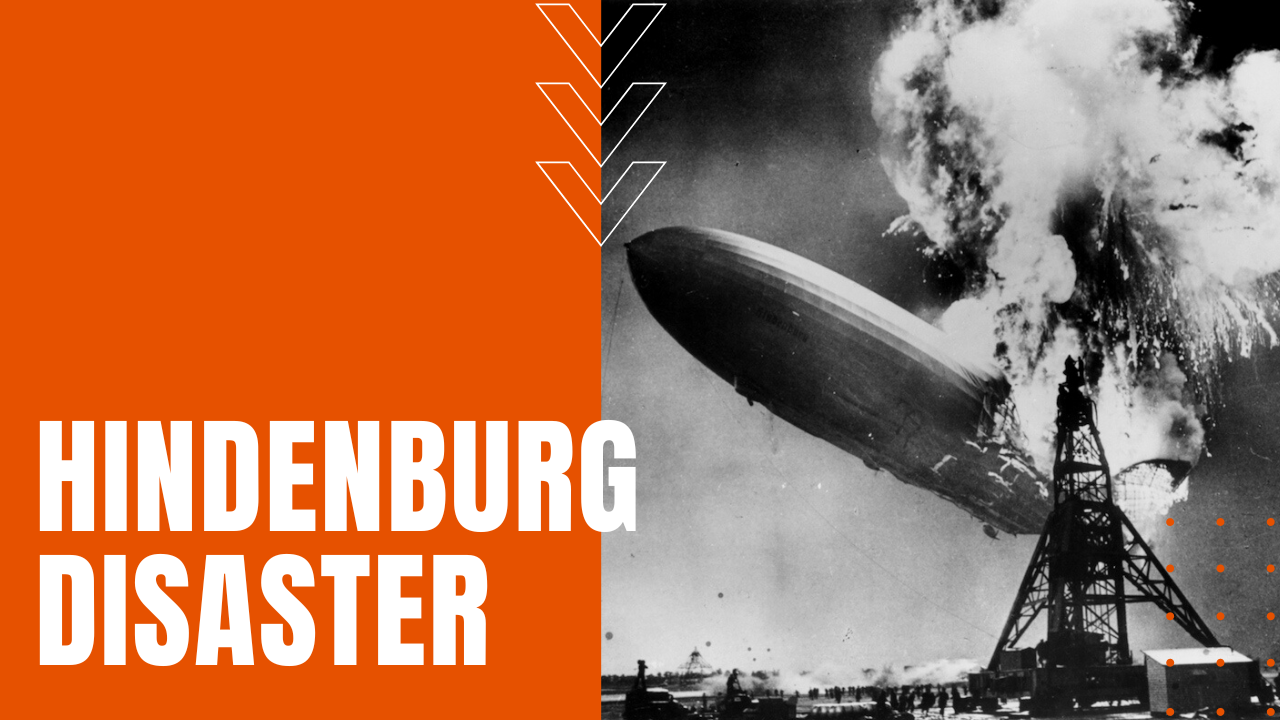The Hindenburg Disaster

What Was the Hindenburg?
After construction began in 1931 of the largest airship ever built—a whopping 804 feet from stem to stern—in 1936, the Nazi’s Hindenburg zeppelin made 10 commercial flights to the United States before years’ end.
Opening her 1937 season with a single round-trip to Rio de Janeiro, the Hindenburg returned to her birth at Frankfurt Germany for the airships’ first of 10 scheduled flights to North America.
Departing Frankfurt on May the 3rd, with 36 passengers and 61 crewmen, the Hindenburg was slowed by headwinds across the Atlantic, passing over Boston on the morning of May the 6th, many hours behind schedule. Delayed yet again by thunderstorms over her planned landing site at Lakehurst New Jersey, Captain Max Pruss charted a course over New York City, igniting a public spectacle as New Yorkers rushed outdoors to witness the massive airship.
At 6:22 in the evening, Captain Pruss was informed that the thunderstorms over the Naval Air Station at Lakehurst had passed, dropping mooring lines at an altitude of 650 feet in a maneuver known as a flying moor or high landing, which allowed ground crew below to winch the giant ship safely to a mooring tower.
What Caused the Hindenburg Disaster?
At 7:25, when the Hindenburg was some 200 feet in the air, several eyewitnesses saw fabric in front of the upper rudder fin flutter from a highly-flammable hydrogen gas leak, while others reported seeing a dim blue flame, just moments before the Hindenburg burst into flames.
By sheer coincidence, radio announcer Herb Morrison was on scene to record a routine segment for NBC news, delivering an emotional account that would later become the nation’s first coast-to-coast radio news broadcast.
Thirteen passengers, 21 Hindenburg crewmen and one ground crewman lost their lives in the conflagration that followed, while nearly everyone who survived the disaster suffered substantial injuries. Lighter-than-air passenger travel rapidly fell out of favor after the zeppelin’s fiery demise, making the Hindenburg Disaster, an early fail in the annals of human flight.
